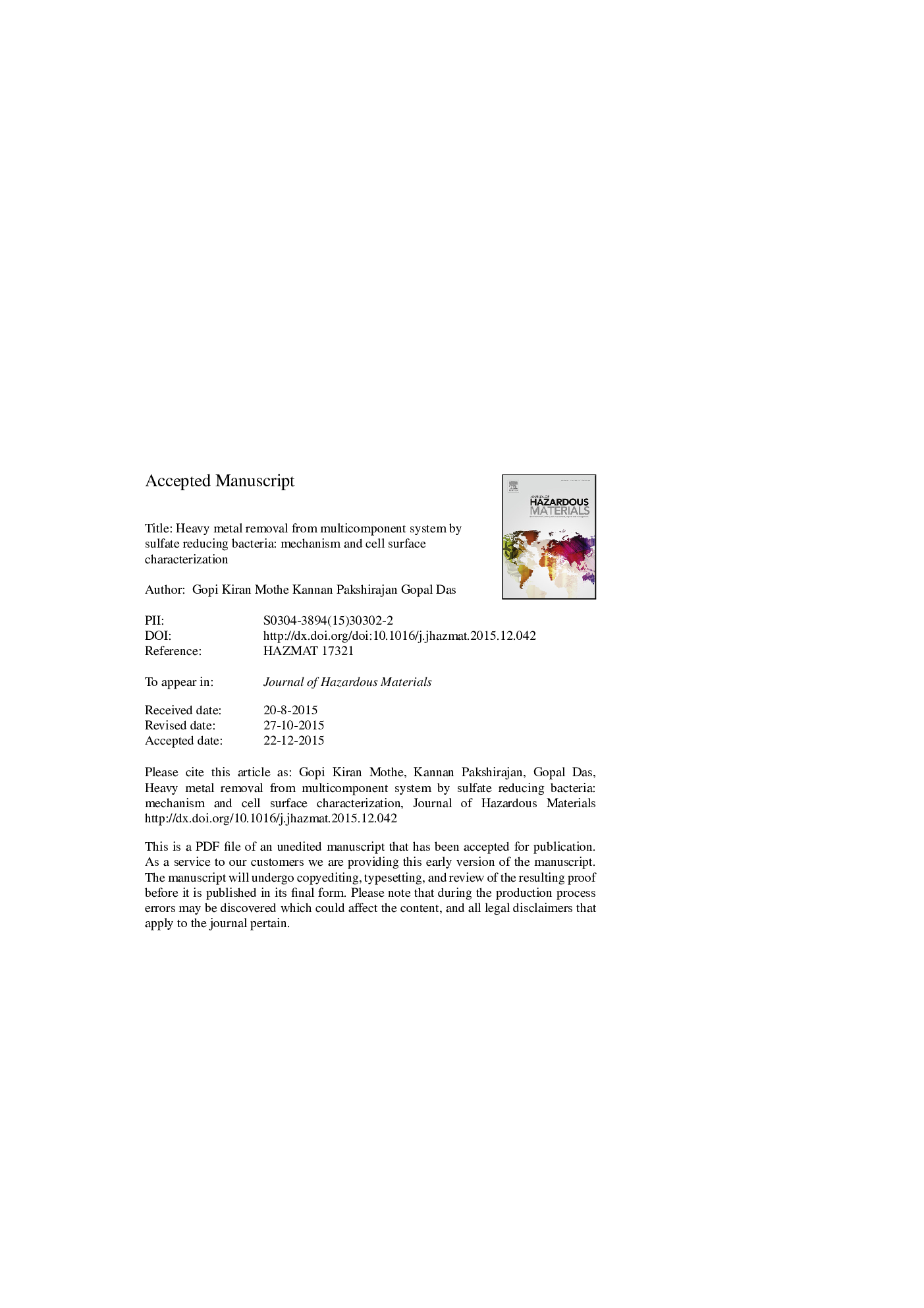| Article ID | Journal | Published Year | Pages | File Type |
|---|---|---|---|---|
| 4979922 | Journal of Hazardous Materials | 2017 | 36 Pages |
Abstract
This study evaluated the combined effect of Cd(II), Cu(II), Ni(II), Fe(III), Pb(II) and Zn(II) on each other removal by anaerobic biomass under sulfate reducing condition. Statistically valid Plackett-Burman design of experiments was employed to carry out this mixture study. The results obtained showed a maximum removal of Cu(II) (98.9%), followed by Ni(II) (97%), Cd(II) (94.8%), Zn(II) (94.6%), Pb(II) (94.4%) and Fe(III) (93.9%). Analysis of variance (ANOVA) of the sulfate and chemical oxygen demand (COD) reduction revealed that the effect due to copper was highly significant (P value < 0.05) on sulfate and COD removal. To establish the role of sulfate reducing bacteria (SRB) in the metal removal process, surface morphology and composition of the metal loaded biomass were analyzed by transmission electron microscopy (TEM) equipped with energy dispersive spectroscopy (EDS) and by field emission scanning electron microscopy (FESEM) integrated with energy dispersive X-ray spectroscopy (EDX). The results obtained revealed that the metal precipitates are associated with the outer and inner cell surface of the SRB as a result of the sulfide generated by SRB.
Keywords
Anaerobic biomassTEM-EDSAphABESASRBMLVSSAMDEDTAethylene diamine tetraacetic acidAmerican Public Health Associationanalysis of varianceANOVAchemical oxygen demandAcid mine drainageSulfate reducing bacteriaMulticomponent systemGravitational accelerationPlackett–Burman designFTIRHeavy metalsmixed liquor volatile suspended solidsCod
Related Topics
Physical Sciences and Engineering
Chemical Engineering
Chemical Health and Safety
Authors
M. Gopi Kiran, Kannan Pakshirajan, Gopal Das,
